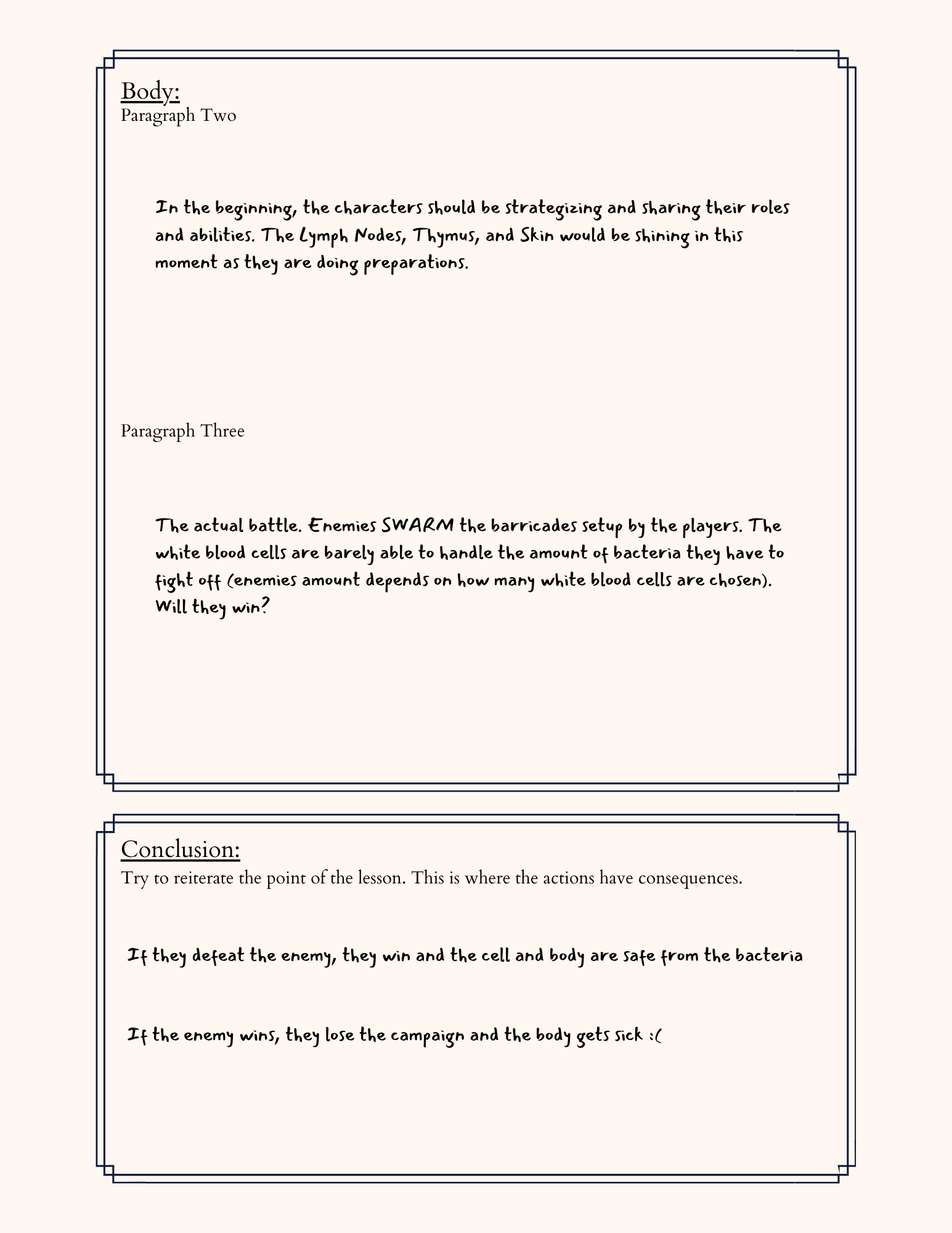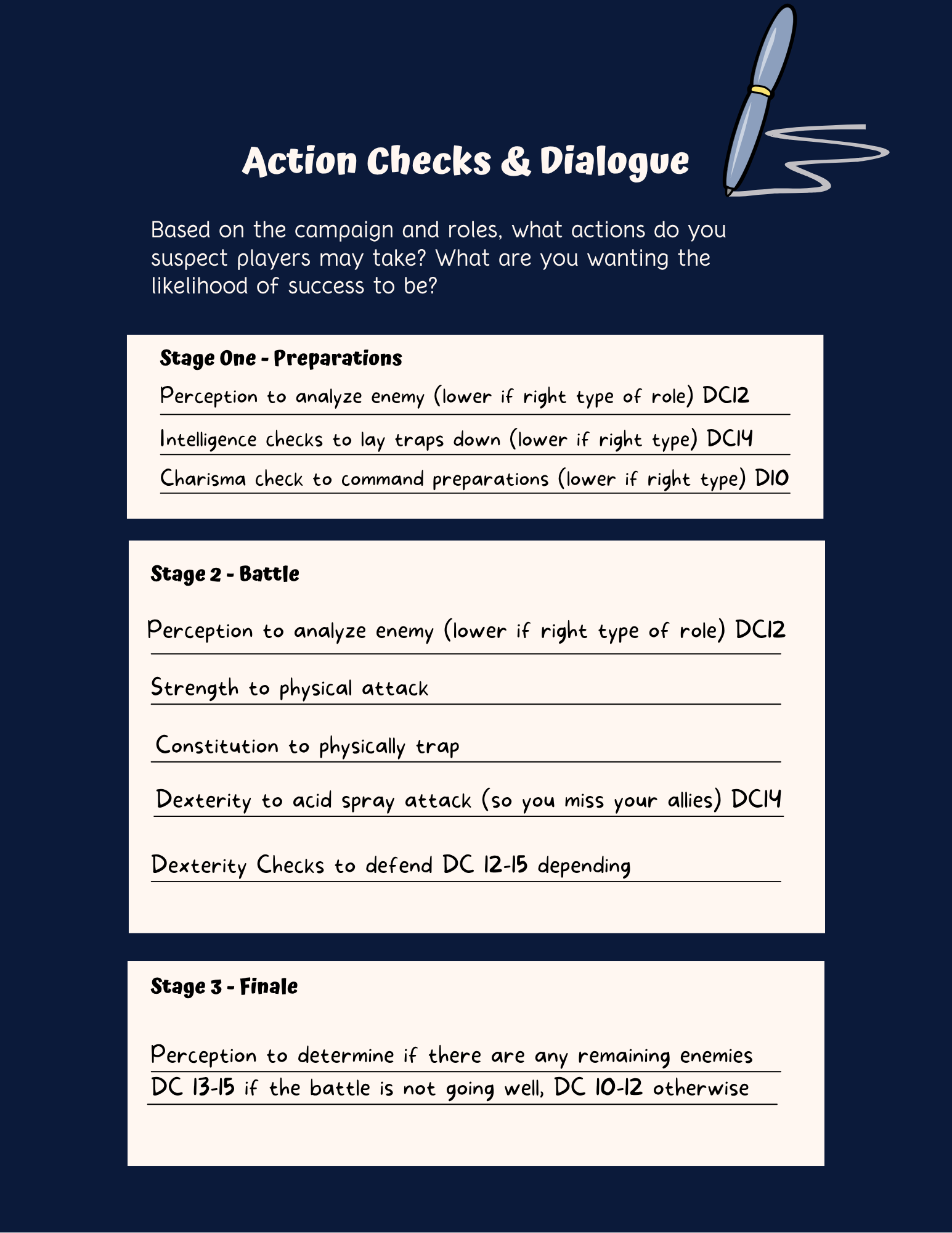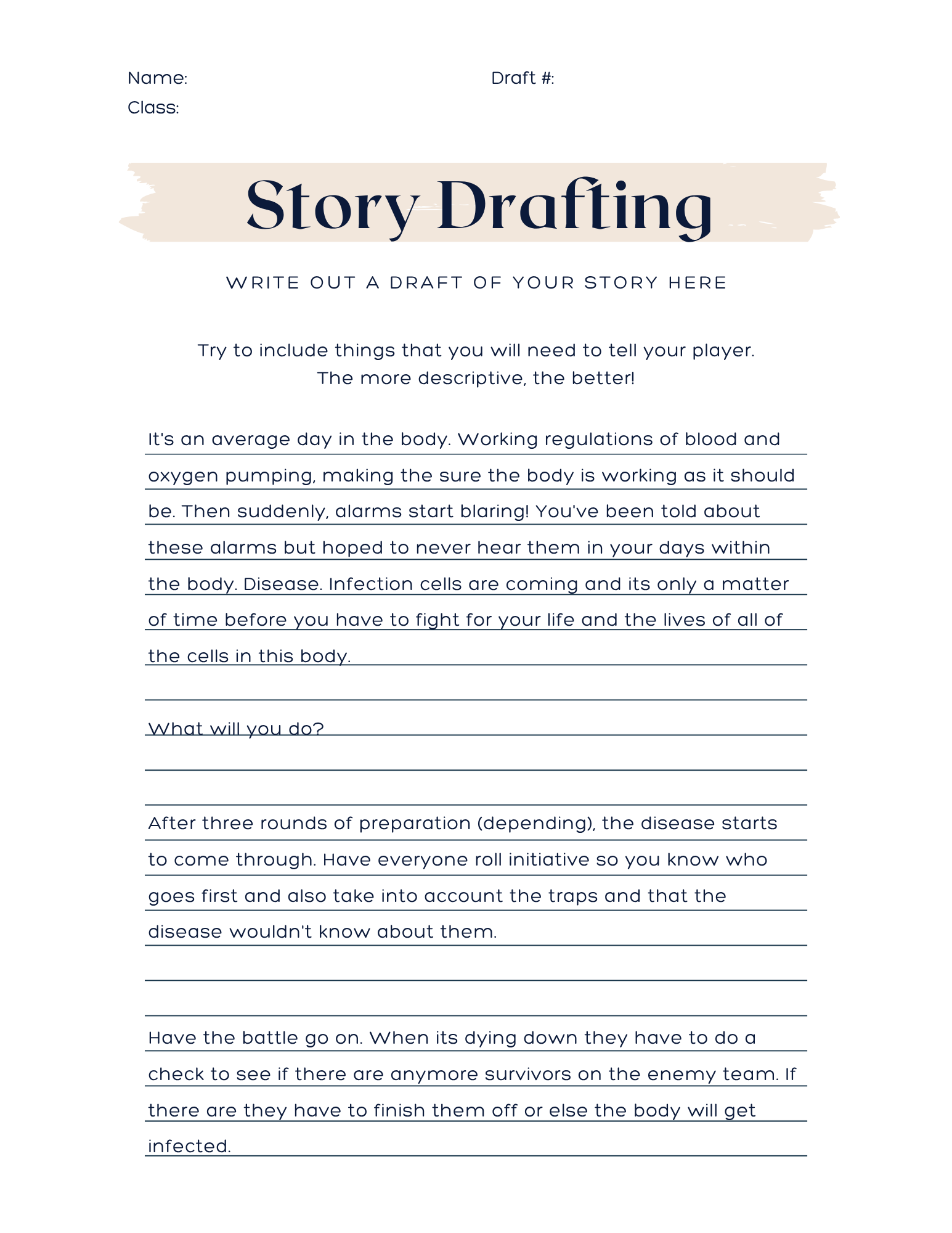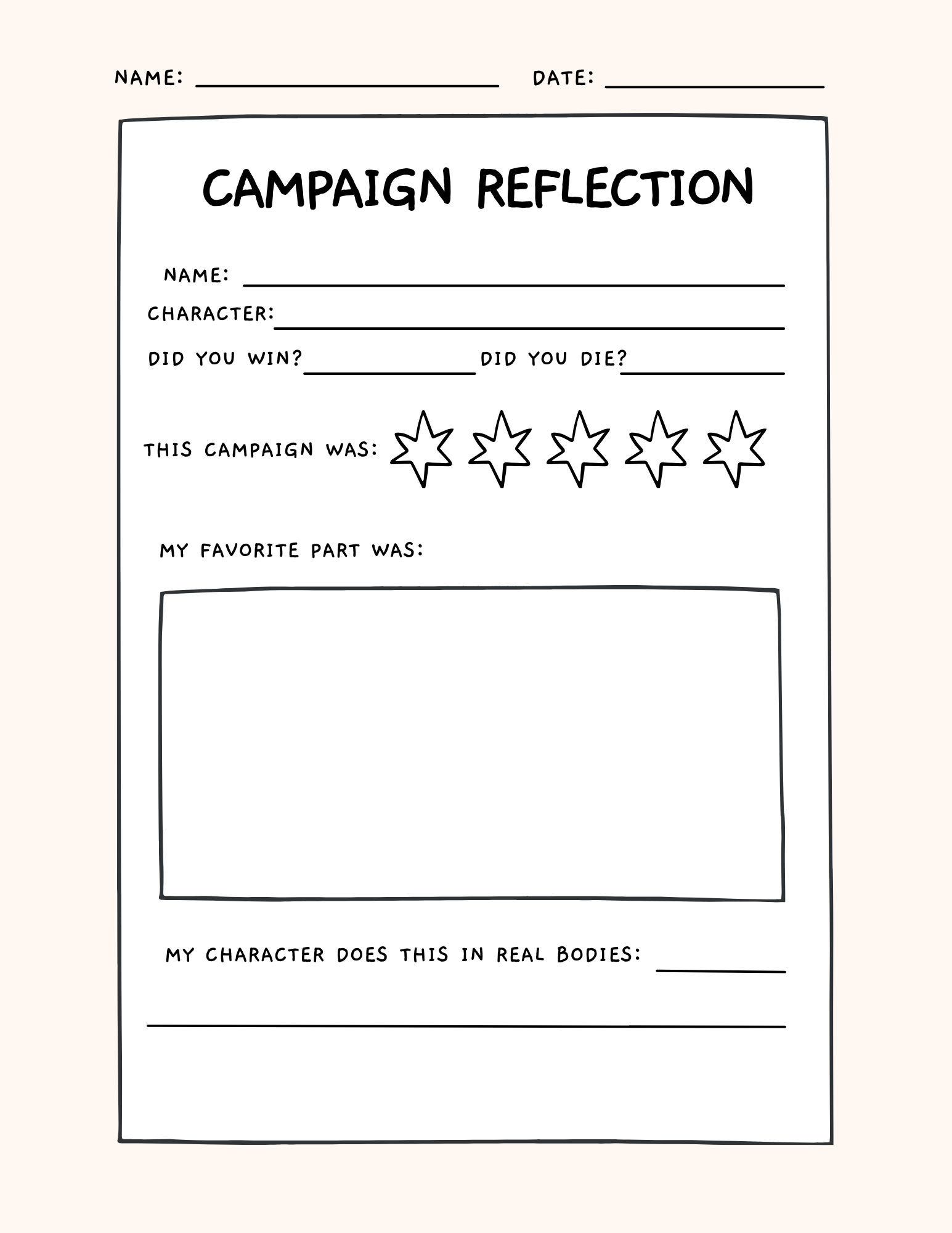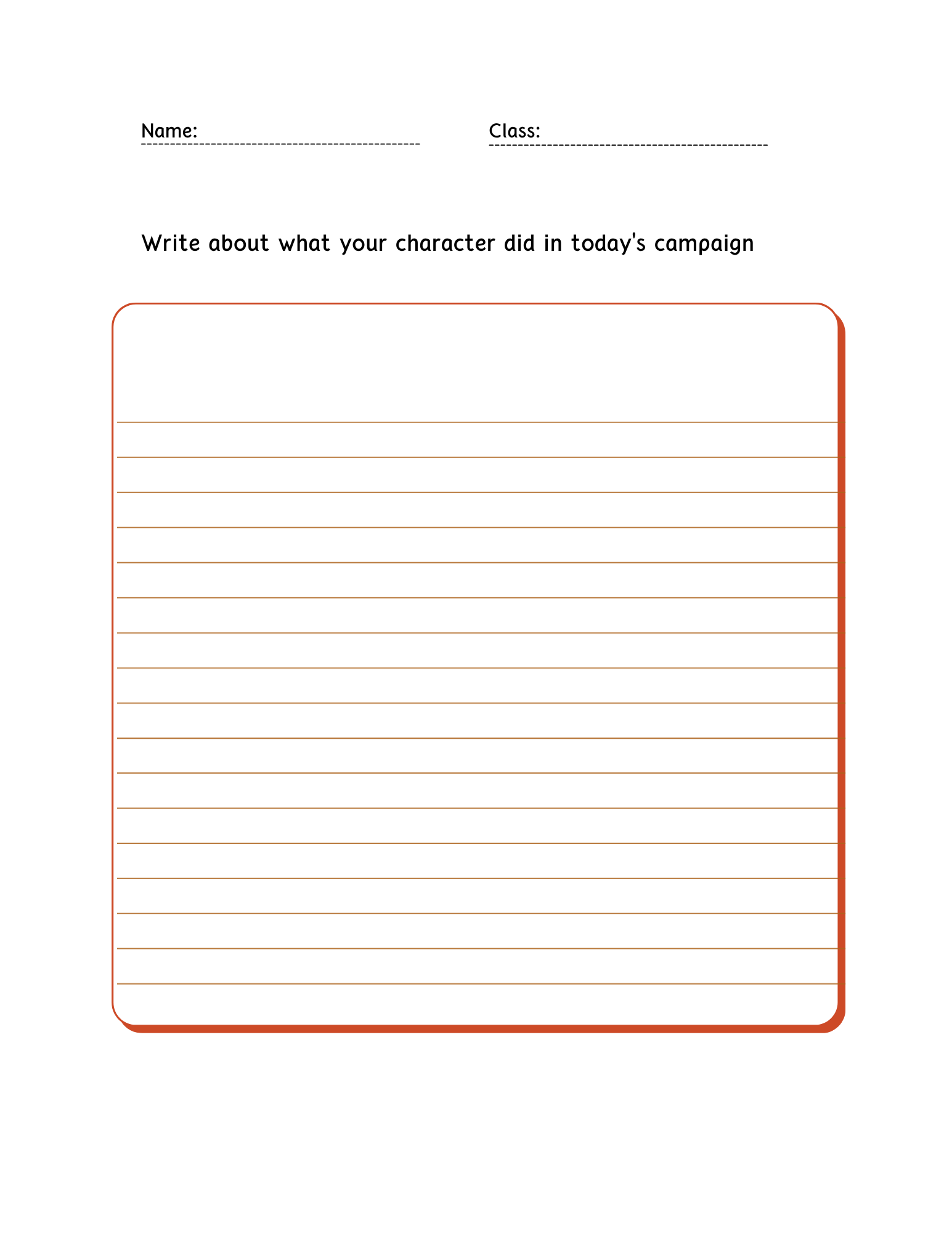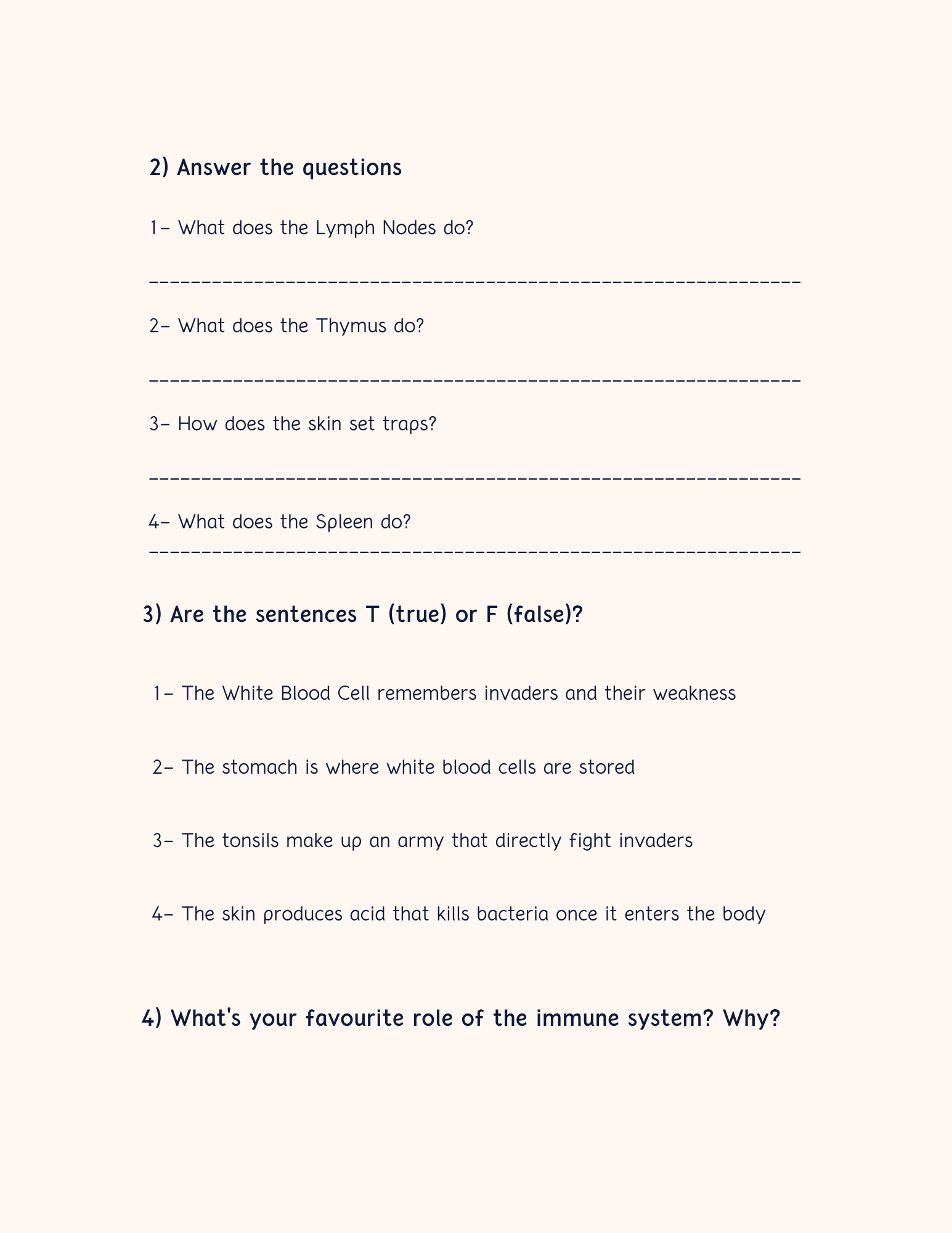
How to use Dungeons and Dragons as a Teaching Tool
an OER created at Worcester Polytechnic Institute
Alexis Boyle and Cori Lutz
This resource was created to share the method in which two graduate students created a small Dungeons and Dragons one-shot campaign to teach an educational lesson.
It will…
walk you through the process in which the team designed, created and ran their campaign
give advice and resources on how you can design, create, and run your own campaign (no matter what subject)
provide workbook space to sketch out ideas and concepts as well as additional resources in the back to support your creative vision
share an example scenario representing a science lesson that can be taught utilizing this method (this example is also detailed below)
Here is the original document we created for this project:

Example lesson:
Seige at the Cell
This one-shot was created as an example scenario. In this example, the objective of the lesson is to teach students about unique parts of the immune system and how they each work in protecting the body.
Step One: Lesson Plan
The first step is to figure out basics about what you’re hoping to achieve with this lesson. In this case, we are aiming for students to learn about parts of the immune system and their roles.
We then determine what roles the students will be able to play in the counter.
In this example, they are able to act as different parts of the immune system!
Finally, we determine a method to use as a gauge for how much the students have learned from this activity. In this case, our marker for their knowledge of the content will be how well they are able to list parts of the immune system and their roles within the system.
Step Two: Plot Points for the Campaign
Now we can write down the major points of our campaign’s storyline!
What setting will the lesson’s campaign take place in? What kicks off the campaign? These are great moments to get the students hooked and engaged with the content! In this case each student is a part of the immune system, working together to keep a body happy and healthy. However, (conveniently after everyone chooses their role) the body is becoming sick!
We now determine what the climax point of the story is and the possible endings for the campaign. In our Immune System one-shot, the climax comes when the invading germs finally break through the outer body defenses and the fate of the body now rests in the hands of the students! We then have cases for if they win or lose (the body will or will not get sick).
Step Three: Campaign Overview
In the next few pages we can write down more details about the campaign arc to have handy for the day of. In this example we wrote down the overall goal as a reminder, an introduction to read that engages students in the lesson (and provides context), the body of the arc and what we expect/aim to happen as well as the conclusionary points of the campaign.
Step Four: Draft of Action Checks & Dialogue
Here is an example of some actions the students may take as well as the traits and DC we are estimating for each action. In this exmaple, this provides a helpful reference sheet to utilize while a ton of children are shouting actions to perform at us as well as what stage each action is expected to occur within.
Step Five: Detailed Story Draft
In this page, we are writing out more details for when we are running the students through the campaign. This helps as we have details prepared for setting and immersion as well as specific calls to action (both for students and ourselves).
Step Six: Character Sheets!
This section demonstrates how the character sheets were utilized to make each sheet a role within the immune system! The sheets also list out some basic information about the role to make it feel more like a character and ot demonstrate its unique abilities!
Step Seven: Lesson Review
These pages allow the students to give feedback on the campaign! This will hopefully provide information to make changes that best suite the learning styles of your class. You could potentially also get some cool drawings from it or even use it as take-home sheets to show parents what the students are learning in school! But in a cool way.
Step Eight: Character Reflection
In this section students get a chance to write about their adventures and solidify their experience and knowledge. Maybe their character set a really cool trap that totally saved the day! This provides engagement and helps act as a sort of review.
Step Nine: Campaign Reflection
Similarly, students can now take a moment to reflect on the campaign as a whole. This helps to keep other roles in mind so they take away knowledge of what everyone else’s role accomplished in the campaign too!
Step Ten: Quiz!
As a final moment in this example, we created a most dreaded quiz (gasp!) to test the students knowledge of the lesson content. This is where we get to see if the lesson was effective or not and what areas could use more focus moving forward!




